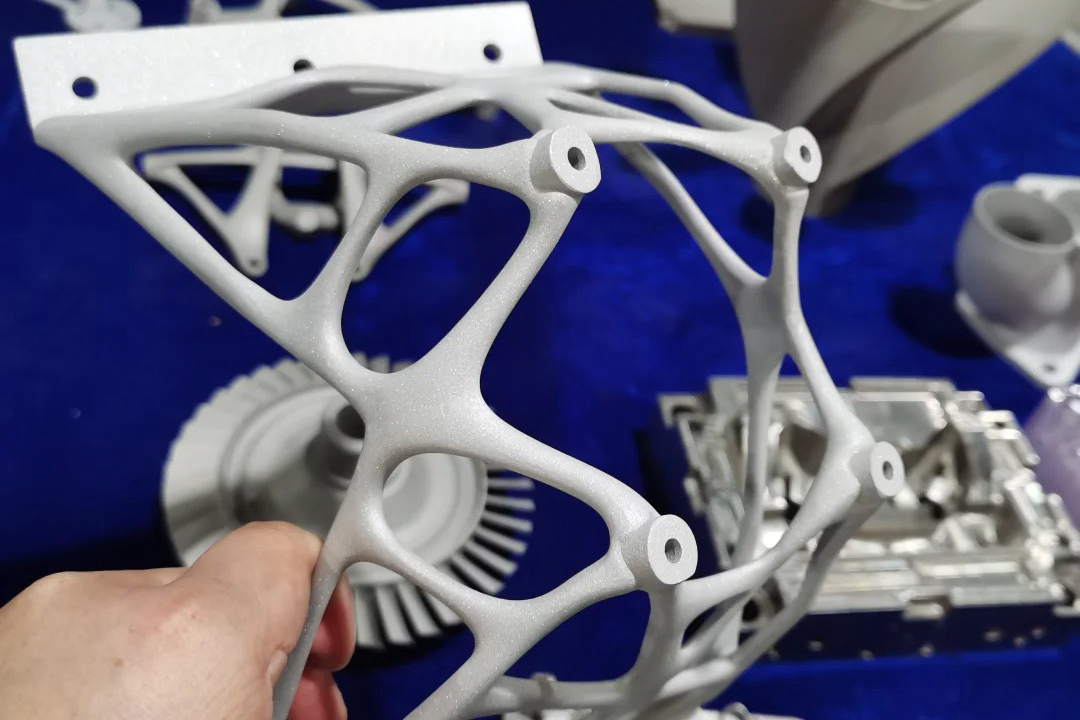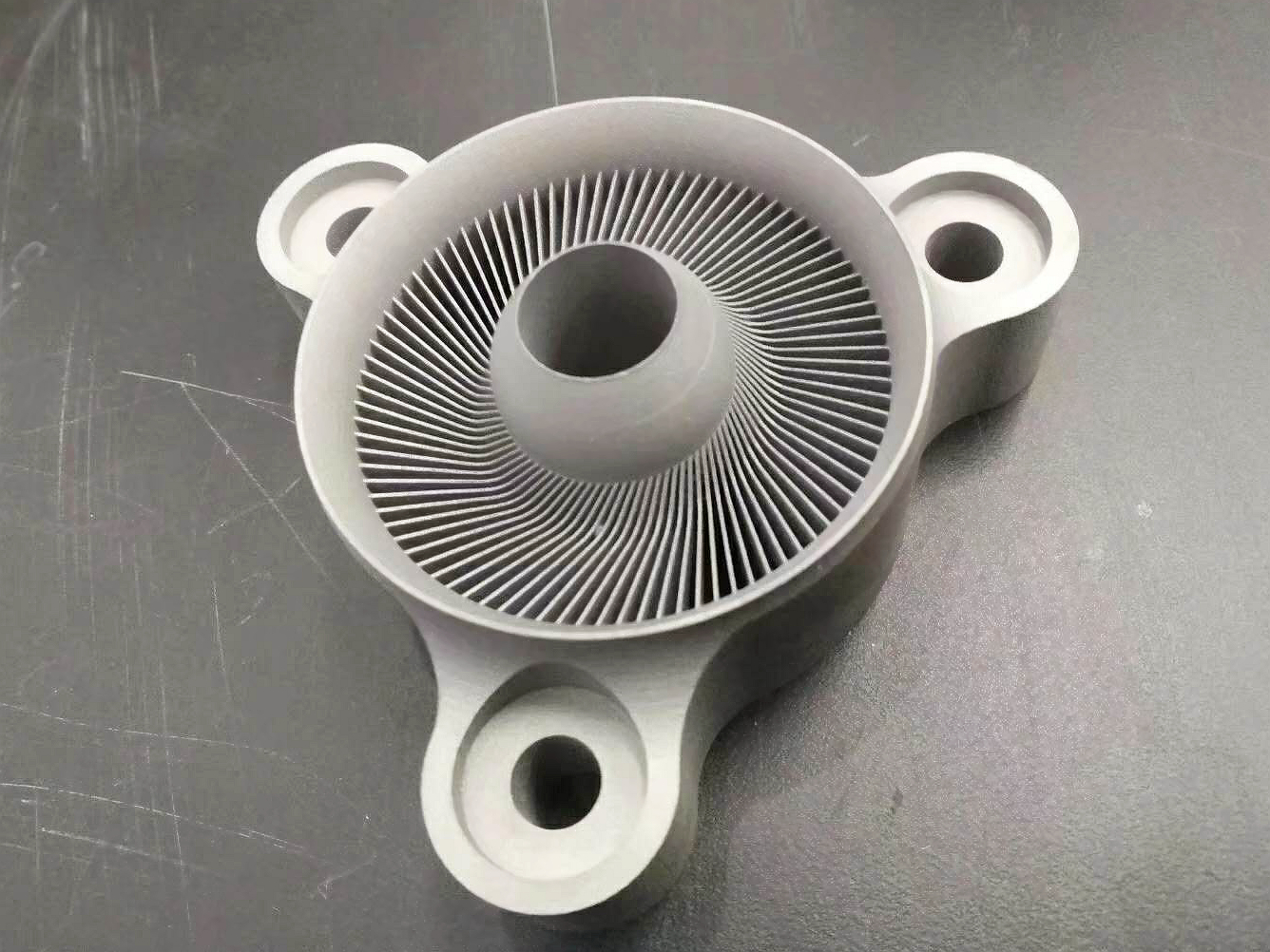Stainless Steel SUS410
SUS410 3D Printing Materials Introduction
Stainless Steel SUS410 is a martensitic stainless steel that delivers excellent hardness, strength, and moderate corrosion resistance. It is commonly selected for structural, tooling, and mechanical components requiring wear resistance and post-heat treatment hardening.
Stainless steel 3D printing of SUS410 is ideal for producing custom parts such as pump shafts, bushings, molds, and fasteners used in industrial, energy, and tooling applications.
SUS410 Similar Grades Table
Country/Region | Standard | Grade or Designation |
|---|---|---|
USA | ASTM | 410 |
UNS | Unified | S41000 |
ISO | International | X12Cr13 |
China | GB/T | 1Cr13 |
Germany | DIN/W.Nr. | 1.4006 |
SUS410 Comprehensive Properties Table
Category | Property | Value |
|---|---|---|
Physical Properties | Density | 7.75 g/cm³ |
Melting Point | 1480–1530°C | |
Thermal Conductivity (100°C) | 24.9 W/(m·K) | |
Electrical Resistivity | 57 µΩ·cm | |
Chemical Composition (%) | Iron (Fe) | Balance |
Chromium (Cr) | 11.5–13.5 | |
Carbon (C) | ≤0.15 | |
Manganese (Mn) | ≤1.0 | |
Silicon (Si) | ≤1.0 | |
Mechanical Properties | Tensile Strength (quenched) | ≥800 MPa |
Yield Strength (0.2%) | ≥600 MPa | |
Hardness (HRC, heat treated) | 40–50 | |
Elongation at Break | ≥15% | |
Modulus of Elasticity | 200 GPa |
3D Printing Technology of SUS410
SUS410 is compatible with Selective Laser Melting (SLM), Direct Metal Laser Sintering (DMLS), and Binder Jetting. These processes enable the manufacturing of robust, wear-resistant metal parts with efficient material use and customization flexibility.
Applicable Process Table
Technology | Precision | Surface Quality | Mechanical Properties | Application Suitability |
|---|---|---|---|---|
SLM | ±0.05–0.2 mm | Excellent | Excellent (post-quench) | Tooling, Wear Components |
DMLS | ±0.05–0.2 mm | Very Good | Excellent | Shafts, Bushings, Mounts |
Binder Jetting | ±0.1–0.3 mm | Moderate | Good (with HIP) | Fixtures, Structural Supports |
SUS410 3D Printing Process Selection Principles
SLM is preferred for high-wear applications requiring hardened parts with fine detail and dimensional accuracy within ±0.05 mm.
DMLS offers uniform microstructure and excellent fatigue resistance, ideal for mechanical supports and load-bearing tools.
Binder Jetting is suited for producing larger volumes of parts, followed by HIP and quenching to achieve final mechanical properties.
SUS410 3D Printing Key Challenges and Solutions
Due to high carbon content, cracking can occur during cooling. Preheating and controlled cooling prevent thermal stress and structural defects.
SUS410 requires quenching and tempering after printing to reach target hardness and strength, typically at 980°C followed by oil or air cooling.
Surface finish may be too rough for direct use. CNC machining and grinding are recommended to achieve Ra <1.6 µm.
Corrosion resistance is limited compared to austenitic grades. Passivation is advised for extended service in humid or chemically active environments.
Typical Post-Processing for SUS410 3D Printed Parts
Quenching and Tempering significantly improves strength and hardness for wear and impact-resistant tooling applications.
CNC Machining enables precision fitting, tolerance correction, and surface enhancement for mechanical assembly.
Grinding or Polishing provides surface refinement, reducing friction in dynamic parts and achieving desired aesthetic finishes.
Passivation forms a passive chromium oxide layer that improves corrosion protection in industrial or coastal operating conditions.
Industry Application Scenarios and Cases
SUS410 is widely used in:
Tooling & Molds: Hard-wearing inserts, cutting guides, and metal forming dies.
Mechanical Assemblies: Shafts, gears, pins, and structural components needing post-hardening strength.
Energy & Industrial: Pump components, sealing flanges, and fluid-handling equipment with erosion resistance.
Automotive: Fasteners, bushings, and wear pads requiring mechanical durability and moderate corrosion protection.
One tooling case featured 3D printed SUS410 forming dies, heat-treated to HRC 48, achieving 60% longer wear life over conventionally machined equivalents.
FAQs
What post-treatments are required for SUS410 after 3D printing?
Is SUS410 suitable for high-strength structural applications?
How does SUS410 compare to 17-4 PH in wear resistance?
Can SUS410 be used in corrosive environments?
What industries most commonly use SUS410 in 3D printing?



